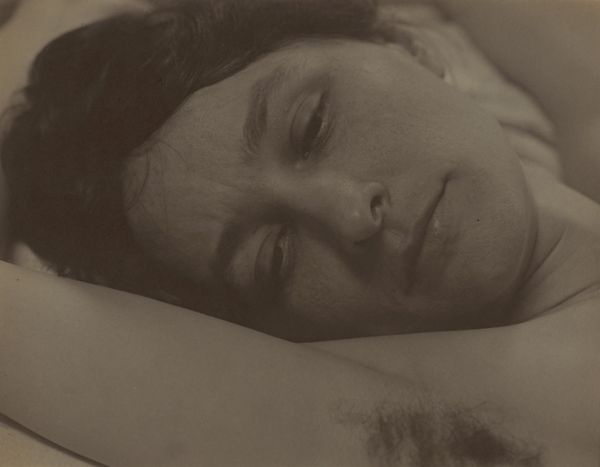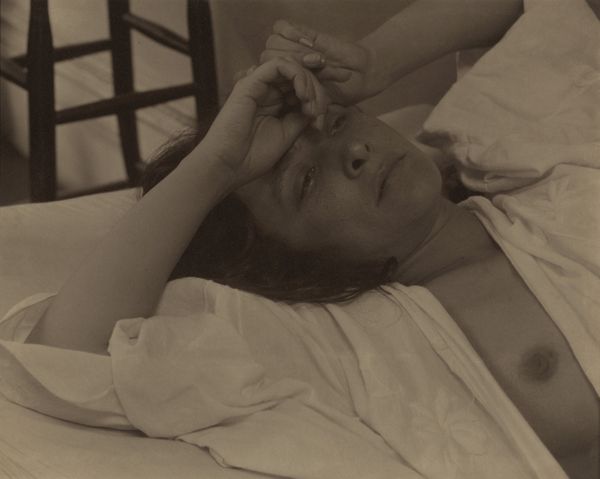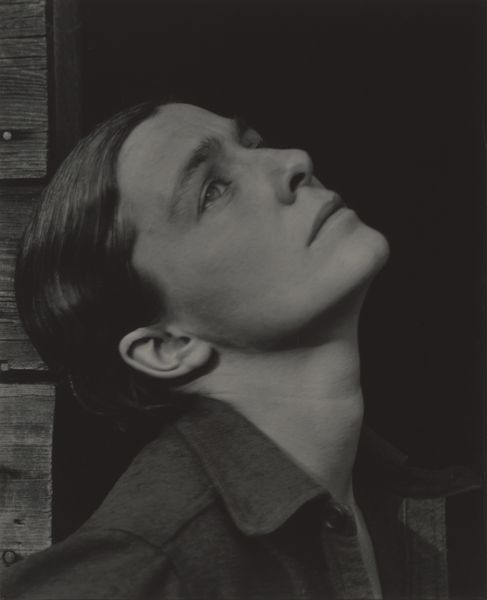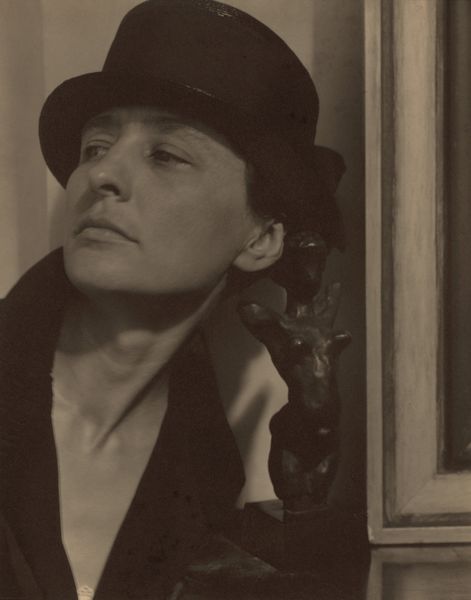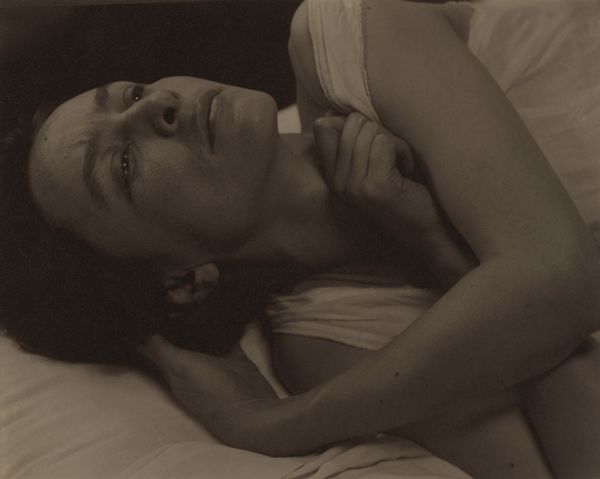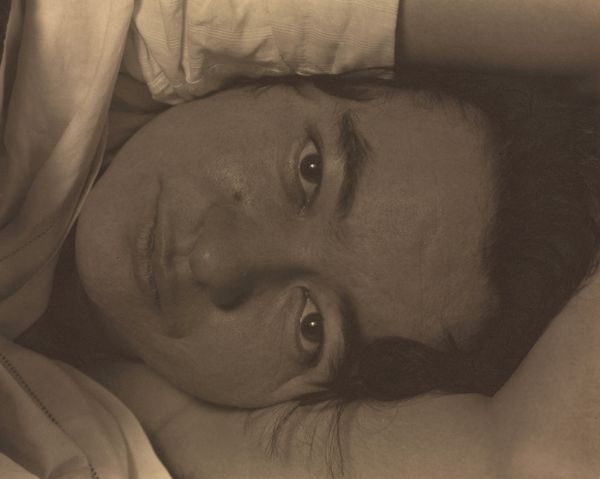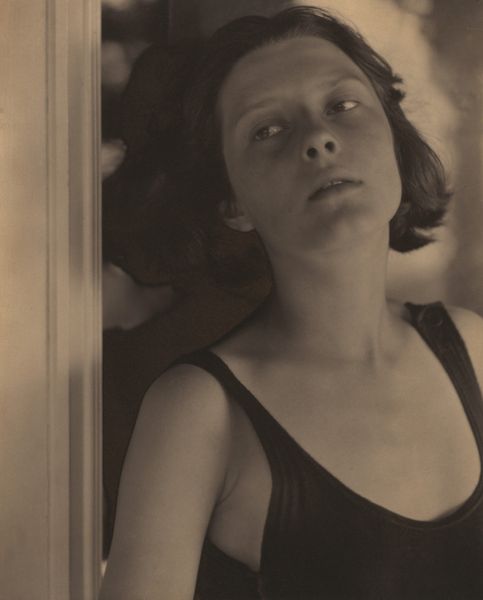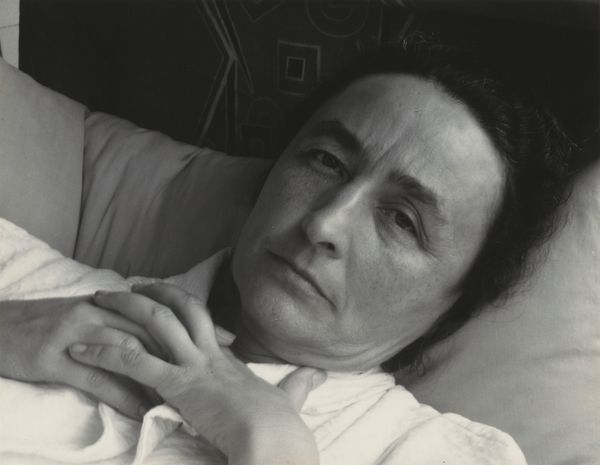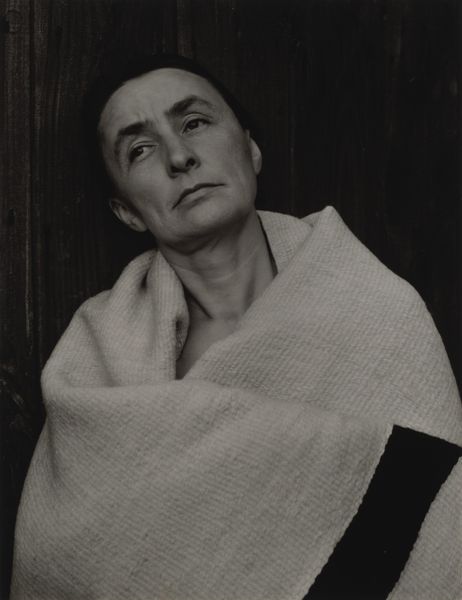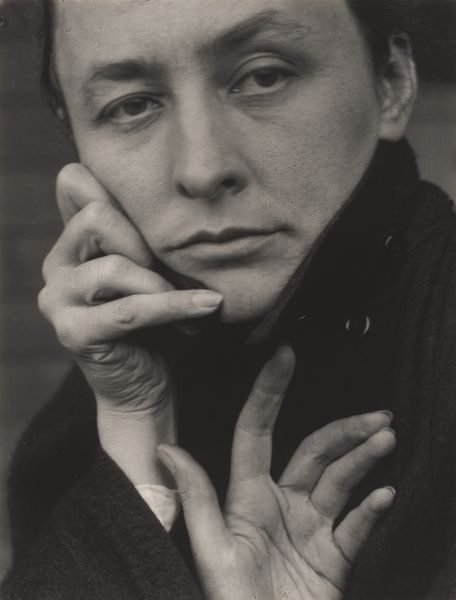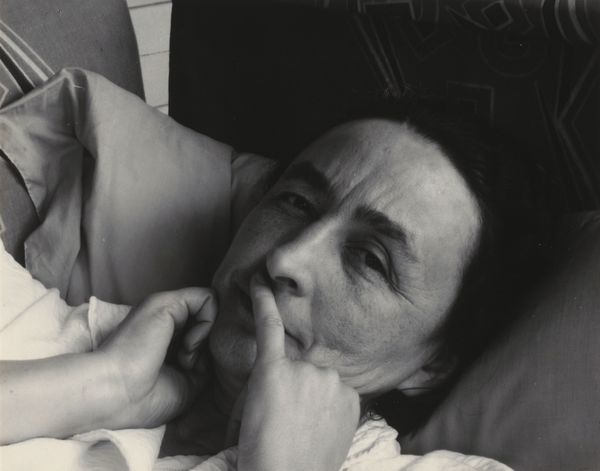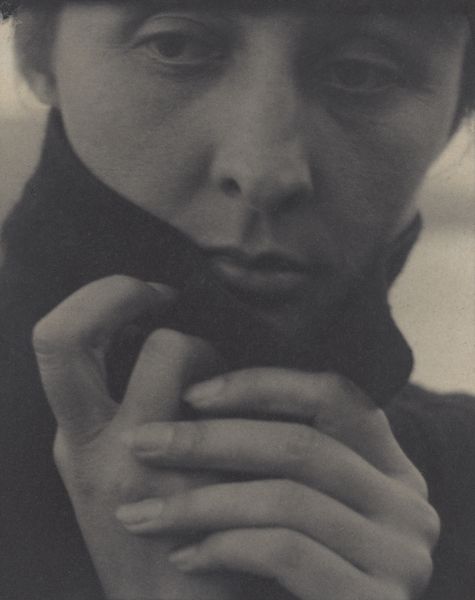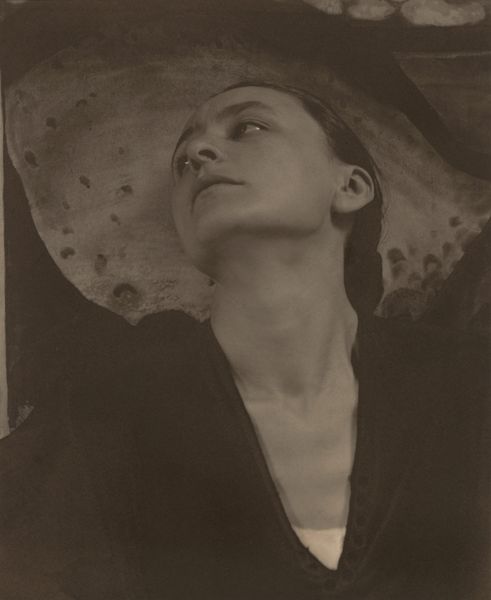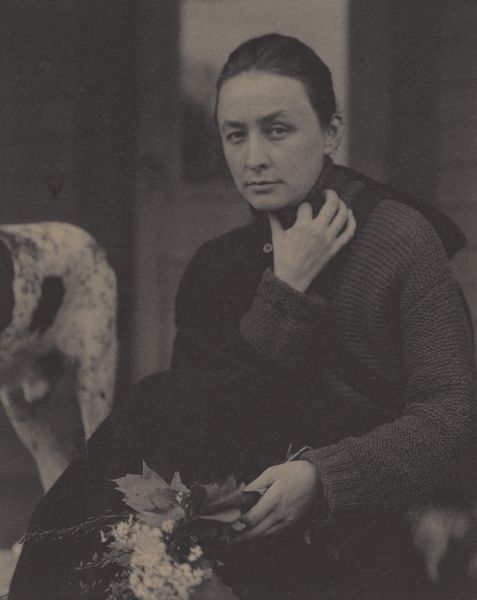
photography, gelatin-silver-print
#
portrait
#
self-portrait
#
pictorialism
#
photography
#
geometric
#
gelatin-silver-print
#
modernism
Dimensions: image: 19.2 x 23.4 cm (7 9/16 x 9 3/16 in.) sheet: 20.2 x 25.2 cm (7 15/16 x 9 15/16 in.)
Copyright: National Gallery of Art: CC0 1.0
Editor: So, we have a gelatin silver print from around 1918, simply titled "Georgia O'Keeffe," but credited to Alfred Stieglitz. The high contrast and tight crop create an intensely intimate, almost confrontational portrait. What's your take on this, given Stieglitz's complex relationship with O'Keeffe? Curator: Intimate is key, I think. Imagine Stieglitz behind the lens, captivated. He frames O'Keeffe almost geometrically. Look at how the light catches the planes of her face, the dark shadows creating depth. It's both reverent and probing. But is it solely his vision? Or do you feel she's collaborating, consciously crafting her own image within his frame? Editor: That's interesting. It's hard to separate the artist from the muse in this case. She seems so present, not passively posed. The way she gazes back... It's powerful. Curator: Precisely! She's not just an object; she's a subject, a force. The softness of the silver gelatin, the way it renders her skin… it’s sensual, but also steely. Stieglitz’s Pictorialism often aimed for painterly effects. Here, does it feel more about capturing an essence or constructing an ideal? Editor: I lean towards capturing essence. There's a raw quality that overrides any sense of idealization. Like a glimpse behind the carefully constructed persona. Curator: Yes, perhaps. Though essence itself can be carefully constructed, no? What I love is the dialogue between the photographic realism and the modernist impulse to reduce form, to abstract emotion. Think we agree, though—it lingers long after you've looked away. Editor: Absolutely. It's a portrait that keeps demanding your attention, peeling back layers each time. Thanks for the insights.
Comments
No comments
Be the first to comment and join the conversation on the ultimate creative platform.
